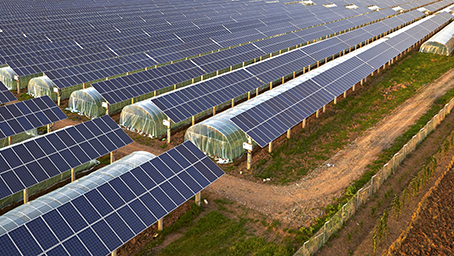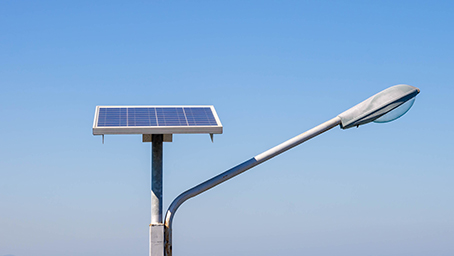In today's global energy transition, photovoltaic (PV) technology, with its clean and renewable characteristics, has become a key force in promoting sustainable development. Especially when PV technology is deeply integrated with multi-scenario applications, it not only brings new energy solutions to the world, but also promotes the harmonious coexistence of economy, society and environment. In this paper, we will deeply explore the unique charm of PV and multi-scenario fusion solar power system and its wide range of application prospects.
1. The Green Transformation of Housing and Building: The Rise of BIPV

Building Integrated Photovoltaic (BIPV) is leading a green revolution in the building industry. Imagine the facade, roof and even windows of a building becoming energy harvesters, with these photovoltaic materials absorbing sunlight and converting it into electricity for use inside the building. This design not only beautifies the appearance of the building, but more importantly, dramatically reduces the building's energy consumption and carbon footprint, making every building that adopts BIPV an island of green in the city, and contributing to the sustainable development of the city.
2. Agricultural "agriculture and light complementary" in the field of agriculture, double benefits

In the vast fields, the agriculture and light complementary mode is quietly emerging. By setting up photovoltaic panels above crops, not only can clean electricity be harvested, but also crop growth is not hindered, realizing the efficient compound use of land resources. This mode not only provides a stable power source for agricultural irrigation and temperature-controlled greenhouses, but also brings additional PV income to farmers and promotes the modernization of agriculture and the development of eco-agriculture.
3. Green empowerment of transportation facilities

In the busy transportation network, solarization of PV roads and transportation facilities is gradually becoming a reality. Highway soundproof walls, rest area canopies, and even the road surface itself, have been endowed with power generation functions. These photovoltaic installations provide clean energy for traffic signals, monitoring systems, and the operation of service areas, reducing dependence on fossil fuels and enhancing the energy self-sufficiency and environmental friendliness of the transportation system.
4. Green Upgrading of Public Facilities

Parks, schools, community squares...these public spaces that are indispensable to our daily lives are also becoming more environmentally friendly with the help of PV technology. The wide application of PV lighting systems and intelligent monitoring not only reduces the pressure on the public power grid, but also creates a safer and more comfortable public environment for citizens. Especially in remote areas, PV systems combined with energy storage technology have become a reliable source of electricity, illuminating remote corners and shortening the gap between urban and rural areas.
5. Energy storage technology: a stable guarantee for PV electricity
The development of energy storage technology provides important support for the wide application of PV energy. By storing excess PV power during the day and releasing it at night or on cloudy or rainy days, it effectively solves the problem of intermittency of PV power generation and ensures the continuity and stability of power supply. This technological breakthrough further enhances the competitiveness of PV as a mainstream energy option and accelerates the transformation of the global energy structure towards a cleaner and more flexible direction.
The integration of PV with multiple scenarios is not only a technological innovation, but also a profound thinking and practicing of the future lifestyle. With technological progress and strengthened policy support, PV solar power systems will blossom in more fields and become a powerful driving force to promote the global green and low-carbon transformation. We have reason to believe that an era of clean energy represented by photovoltaics is accelerating, bringing a greener and more sustainable future for the earth.
Photovoltaic and multi-scenario fusion of solar power supply systems play an increasingly important role in the daily lives of our ordinary residents, the following are some of the main application scenarios that are closely related to our daily lives:
Residential rooftop photovoltaic systems: Residents can install photovoltaic panels on their own rooftops to convert solar energy directly into electricity for household use, which reduces electricity bills and provides green, sustainable energy for the home. This type of distributed PV power generation system is supported by government subsidies and incentives in many countries and regions, encouraging residents to participate.
Community and Public Area Lighting: Solar streetlights and landscape lighting are becoming more common in public areas of neighborhoods, parks, and walkways. These facilities utilize photovoltaic panels to collect solar energy and automatically light up at night without the need to lay cables, reducing maintenance costs while beautifying the living environment.
Home Energy Storage Systems: With advances in energy storage technology, many homes are beginning to be equipped with photovoltaic energy storage systems. When there is sufficient sunlight, excess energy is stored for use at night or on cloudy days, ensuring the continuity and stability of the home's power supply.
Portable solar products: From solar chargers to solar outdoor tents, a variety of portable solar products make outdoor activities more convenient and environmentally friendly. These products can provide power for small appliances such as cell phones, tablets, and camping lights in places without grid access.
Smart Home Integration: In the smart home system, PV power supply can be integrated with smart home devices, such as smart curtains and temperature control systems, which automatically adjust according to the intensity of sunlight, improve energy utilization efficiency, and make home life more intelligent and energy-efficient.
Electric vehicle charging: With the popularization of electric vehicles, it has become possible to use PV to charge electric vehicles. Residents can install photovoltaic charging facilities in their own garages or parking spaces, realizing green mobility from the source to the use of the whole process.
Through these applications, photovoltaic technology not only helps residents to reduce the cost of living, but also promotes the enhancement of environmental protection awareness, so that every family can participate in energy saving and emission reduction actions, and jointly promote the sustainable development of society.







